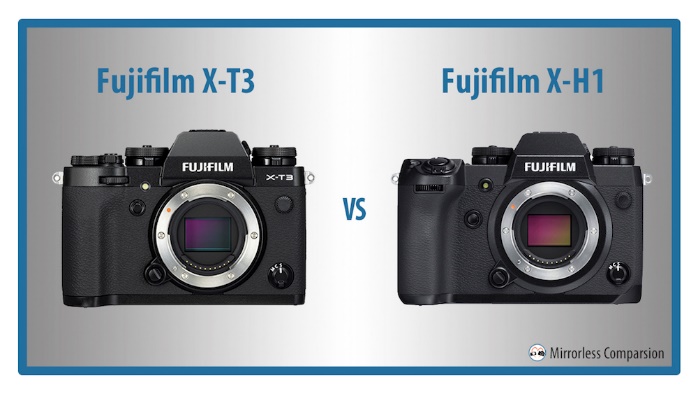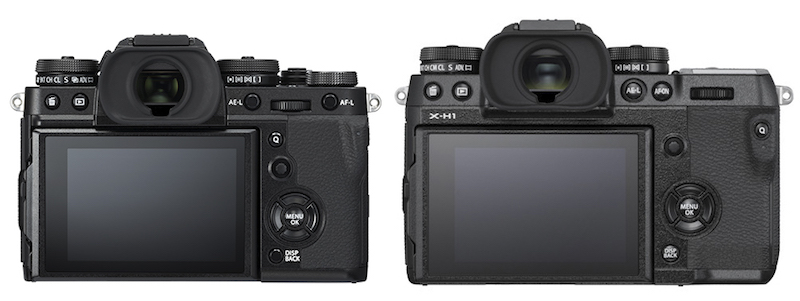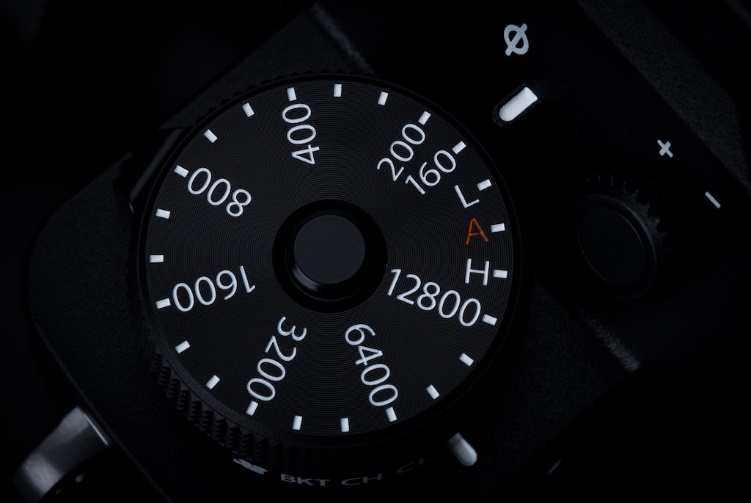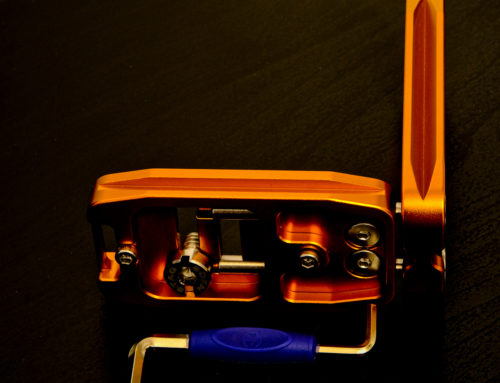Since the new FUJIFILM X-T3 is now available I have been asked often about the differences I see between the X-T3 and the X-H1. First, each camera serves a different purpose. I’ll talk about most of the important things here.

The X-H1 is officially the flagship camera in Fujifilm’s X Series cameras. The X-T3 brings many new features: 4K recording at 60fps/10-bit, a brand-new sensor with BSI technology, and improved autofocus and burst capabilities with the electronic shutter.
Remember that the X-H1 has 5-axis in-body stabilization a very useful feature if you handhold a lot. You also might enjoy the larger and more pronounced grip as well.
The X-T3 is an amazing camera and it puts Fujifilm right there in a position to compete with Sony and Panasonic.
SO WHAT ARE THE DIFFERENCES?
I’ve had the X-T3 for about 3 weeks now. It certainly is an improvement over the X-T2. I use the X-H1 a lot as well as the X-T3. Both serve different purposes and are great cameras!

FUJIFILM X-H1 Fujifilm 100-400mm R LM OIS WR,
Handheld on a moving boat! 1/4000 at F 5.6 ISO 640

FUJIFILM X-T3 Fujifilm 50-140 f.2.8 R LM OIS WR,
Tripod. 1/5 at F22 ISO 160
Camera Comparisons:
X-T3
- 26.1MP APS-C X-Trans BSI CMOS 4 Sensor
- X-Processor 4 with Quad CPU
- UHD 4K60 Video; F-Log Gamma & 10-Bit Out

X-H1
- 24.3MP APS-C X-Trans CMOS III Sensor
- X-Processor Pro Engine
- 5-Axis In-Body Image Stabilization
- Internal DCI 4K Video and F-Log Gamma

What They Both Have In Common:
- weather-sealed construction (splash, dust and freeze proof)
- 0.5-inch 3.69 million dot EVF with 0.75x magnification
- 3-way tilting LCD with 1.04 million dots and touch sensitivity
- physical dials for shutter speed, ISO, focus, metering and drive settings
- 15min (T mode) to 1/8000s, or up to 1/32000s with electronic shutter
- Eterna film simulation mode for video and internal F-Log
- dual SD card slot (UHS-II)
- 3.5mm microphone and headphone jacks
- Bluetooth and WiFi connectivity

 The main reason I like to use the X-H1 when I have to hand hold is because the X-H1 has the stabilization built in. The X-T3 doesn’t.
The main reason I like to use the X-H1 when I have to hand hold is because the X-H1 has the stabilization built in. The X-T3 doesn’t.
However, the X-T3 is lighter and smaller than X-H1 (X-H1: 673g | 139.8 x 97.3 x 85.5mm; X-T3: 539g | 132.5 x 92.8 x 58.8mm)
Other improvements over the X-H1
1) Improvements such as a Backlit sensor and a few more MP’s. The X-T3 has the brand-new X-Trans IV sensor with 26.1MP and BSI (backside illumination) technology. The BSI structure improves the low-light performance of the X-T3. The new sensor collects more light in comparison to the front-side structure (X-T2, X-H1). Fujifilm states that the sensor readout is now 1.5x faster than previous models which should improve rolling shutter, among other things.
2) The X-T3 has a few extra ISO speeds too: a native 160 value and an 80 extended value. All other values it shares with the X-H1 are the same.

3) Improved Auto focus: The X-T3 has 117 phase detection points on a 13×9 grid ( 425 points on a 17×25 grid), while the X-H1 has with 91 points on a 13×7 grid (325 points on a 13×25 grid). The X-T3 also has 4x the number of phase detection pixels (2.16M) in comparison to theX-H1.
4) The X-H1’s phase detection pixels are confined to the central portion of the sensor. However, the X-T3 offers full coverage at 99% of the width and height, which wedding and street shooters will love. Phase detection autofocus in low light is also two stops more sensitive than the X-H1 (-3EV vs -1EV) …. QUITE AMAZING. The powerful X Processor 4 also allows the X-T3 to refocus and meter 1.5x more frequently than the X-H1.
5) Fujifilm states that face and eye detection are twice as effective on the new model, with the latter being accessible in C-AF and movie mode. This function is very unreliable on the X-H1 and other previous Fujifilm models.
6) The X-H1 can shoot up to 8fps (mechanical shutter) or 14fps (electronic shutter). If you use the VPB-XH1 battery grip, you can push the mechanical speed up to 11fps. The X-T3 shoots at 11fps with the mechanical shutter and 20fps with the e-shutter without the need for the battery grip. Great for wildlife, birds, etc.!
EVEN FASTER: With the new camera you can shoot up to 30fps with AF/AE tracking in crop mode (1.25x, 16.6MP) using the electronic shutter while maintaining live view at a refresh rate of 60hz. Only the Sony A9 and the Fujifilm X-T3 has enough power to maintain live view in the EVF/LCD while shooting at high speeds.
7) Fujifilm’s X-T3 features a brand-new pre-capture mode similar to the Olympus OM-D-E-M1 II and the Panasonic Lumix G9. When you half-press the shutter button, the camera preloads frames to the buffer memory but saves the most recent images when you fully depress the button. This is important for instance if you have a delayed reaction when a bird is taking off, or someone running you’ll be able to capture the scene.
8) And the final improvement, the X-T3 has better video than the X-H1. The X-H1 may be the flagship Fujifilm camera but the new X-T3 actually has far better video specifications. It can record at a higher frame rate in 4K with a faster bitrate and more choice when it comes to codecs and the types of compression. It also becomes the first mirrorless camera (actually the first camera, period) to offer 4K/60p at 10-bit.
To make it easier to see the differences, take a look at the information presented below:
X-T3:
4K up to 60fps
Cinema 4K/DCI up to 60fps
4K up to 400Mbps
4K with IPB or All-I compression
H.264 and H.265 codecs
Internal recording in 4:2:0 10-bit
External recording in 4:2:2 10-bit
X-H1:
4K up to 30fps
Cinema 4K/DCI at 24fps
4K up to 200Mbps
4K with IPB compression
H.264 codec
Internal recording in 4:2:0 8-bit
External recording in 4:2:2 8-bit
The X-T3 offers internal 10-bit recording with 64 times more color depth than the X-T2 in 8-bit
To record 4K video, the X-H1 crops the sensor by approximately 1.17x (your field of view is narrower). The X-T3 performs a marginally larger crop of 1.18x when recording 4K at 50 or 60fps, (uses the entire width of the sensor up to 30p).
In 1080p, both can record up to 60fps or 120fps in High Speed mode to offer better slow-motion footage. The X-T3 uses a higher bitrate of 200Mbps (vs 100Mbps for the X-H1). There is a more significant crop of 1.29x to preserve better quality. The 120fps mode of the X-H1 is not as sharp in this mode.
X-H1:
4k up to 15 minutes
Full HD up to 20 min
4K & Full HD up to 30
Min with battery grip
X-T3:
4K up to 30 min
Full HD up to 30min
9) The X-T3 includes the addition of zebra pattern, improved rolling shutter and AF performance, magnification during video capture, face detection in 4K and up to 12 stops of dynamic range when using the DR400% setting at ISO 640.
10) Both cameras have a silent mode feature that disables buttons and dial.
11) The X-T3 has a new manual focus assist that simulates focusing through an old-school SLR viewfinder.
12) The X-T3’s Night Vision mode helps to preserve your night-adapted vision by turning the background of the LCD grey and the text red.
13) The X-T3 has a new Sports Finder mode. The camera crops the sensor by 1.25x which gives you 16.6MP of resolution to work with. The EVF keeps the native view of the sensor but displays a bright frame that shows the limit of the cropped area (you can see what’s happening outside the scene and anticipate the action better).
14) Better battery life in the X-T3 with the NP-126S battery, can take 390 shots on one charge whereas the X-H1 allows you only 310 shots. When shooting in 4K, the X-H1 has enough juice to last 35 minutes whereas the X-T3 can last up to 40 minutes. The battery grip will also extend the battery life.
Current Pricing:
The X-H1 is the most expensive camera in the APS-C line-up with a price of around $1,900 / £1,700 / €1,900, minus instant savings or other promotions you can now find in a few shops and countries.
As of this writing the X-T3 has a U.S. retail price of $1,899.99. The X-H1 is $1,649.00 (Bodies Only).
You can view more information on Fujifilm USA.
© Jack Graham / All Rights Reserved







Uh Oh. Just ordered the Z7. Am I still allowed on your Acadia NP trip?
No worries Mike!! Glad you could make the workshop.